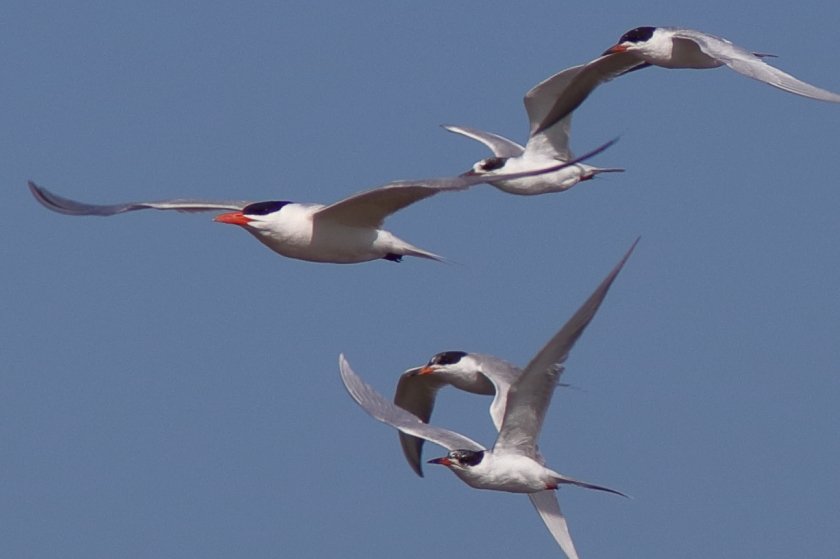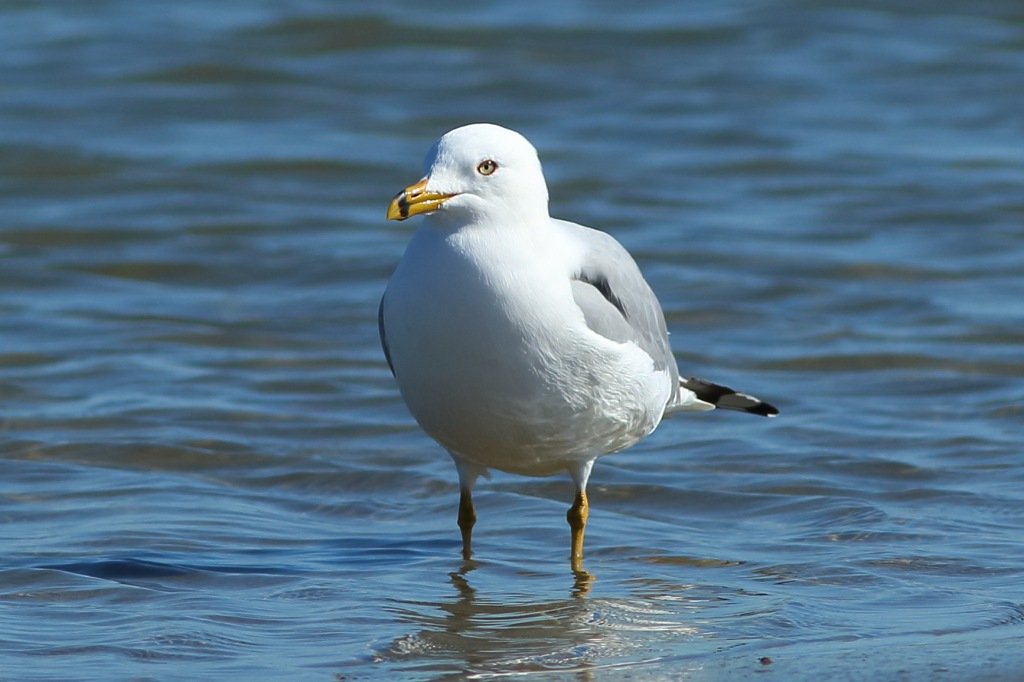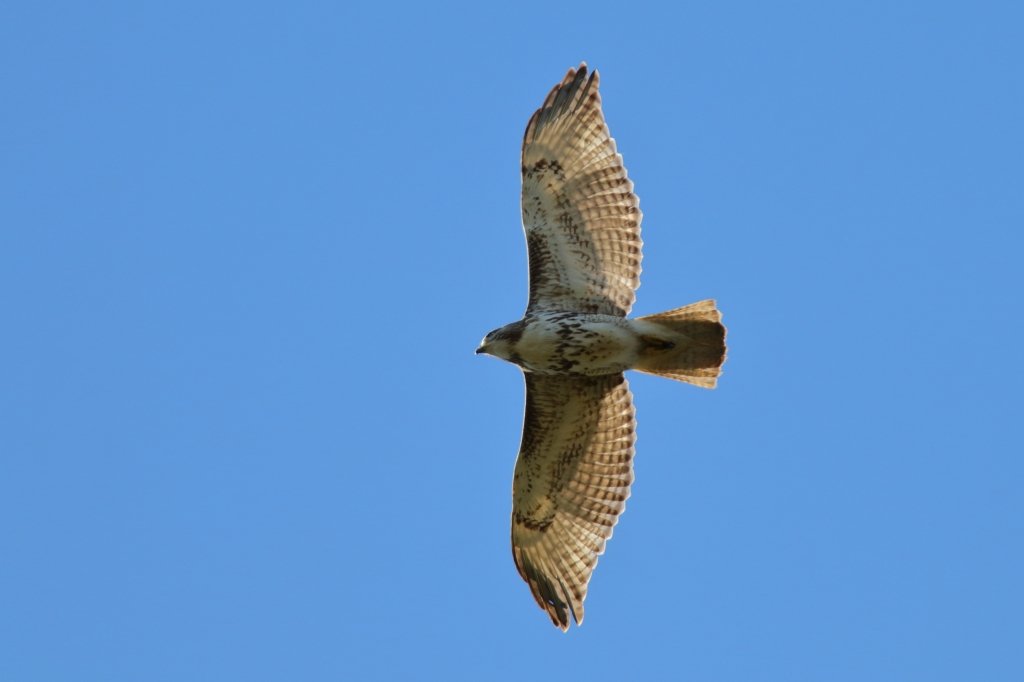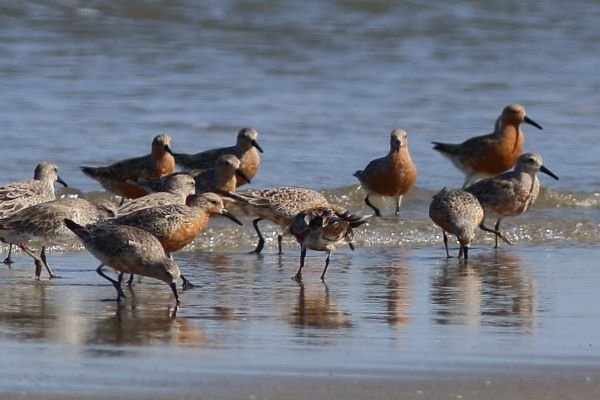
If you pay close attention, you will see this general color pattern in not just birds, but in a wide array of species, in everything from insects, fish, reptiles, birds, and mammals. There must be an evolutionary advantage! Back in 1896, Abbott H. Thayer wrote a paper describing the dark top, light underneath as a common color pattern he called “obliterative shading.” Since that time, most scientists call it “countershading.” The hypothesis postulated said that the light underneath created a pattern that disrupted the animal’s form, making it look less three dimensional and therefore not recognized as an animal.
While generally accepted, the hypothesis became one of many untested hypotheses. These have included the benefit of thermal regulation and UV protection. In 2008, Hannah M. Rowland wrote a paper that tested the camouflage efficacy of countershading in insect larva and found that the color pattern did provide some protection.
Other more recent studies have delved deeper. Each find there are advantages depending upon the animals’ situation. Animals exhibiting countershading include both predator and prey.

One study found that when scientists painted a gull’s underside dark the gull was less successful in catching food. Apparently, the light belly helped the gulls disappear in the sun. Shallow feeding predatory fish also will generally be light underneath. Swimming above their prey they can blend in with the sky.

The next time you see a Red-tailed Hawk high up in the sky watch how it blinks on and off depending upon the position it is in relation to the sun. So, countershading helps predators.
Yet, many prey species from birds, mice, snakes, frogs, and deer to name a few, also are light underneath. How does this help them? Go outside and stand in the sun and you will notice one very distinctive pattern is shadow. A predator spotting a shadow knows food is attached to that shadow. If an animal can reduce its shadow, predators will struggle to spot the prey. The light-colored ventral (from the Latin word venter “belly”) helps to counteract the animals shadow, making the animal appear flatter.
One problem with this is knowing if it really works. Most of the studies used human subjects to look for camouflaged “prey.” Yet, we know animals perceive the world differently. The few studies that do use animals have shown some protective benefit from countershading. Right now, this is still the best hypothesis.

A good example, can be seen in the Red Knots visiting Seabrook Island. During the winter, these grayish birds with white bellies roam the beach. The sands and muds of the beach enable the dark upper surface and the white shadow reducing lower surface to provide some camouflage. By the time they leave us in May, they will be a speckled backed bird with a rusty colored chest and a bright white belly. Can you guess why they change colors?

From our perspective from the side, like a land-based predator, that white belly is obvious. An aerial predator may have difficulty finding the bird. How would it protect itself from a fox while in the Arctic? The mottled red color closely matches the color of the ground and plants. The white belly may contribute to this camouflage.
Your assignment: Next time you are out birding look not just to identify the bird but take time and study it. Does it have a darker dorsal (from the Latin dorsum “back”) surface than the ventral surface. Is it a predator species or a prey species? What is your hypothesis for the birds’ color pattern?
References
Rowland, Hannah M. From Abbot Thayer to the present day: what have we learned about the function of countershading? PhilosTrans R Soc lond B Biol Sci. 2008 Nov 10 https://pmc.ncbi.nlm.nih.gov/articles/PMC2674085/
Penacchio, O., Harris, J.M. & Lovell, P.G. Establishing the behavioural limits for countershaded camouflage. Sci Rep 7, 13672 (2017). https://doi.org/10.1038/s41598-017-13914-y
Submitted by Bob Mercer
